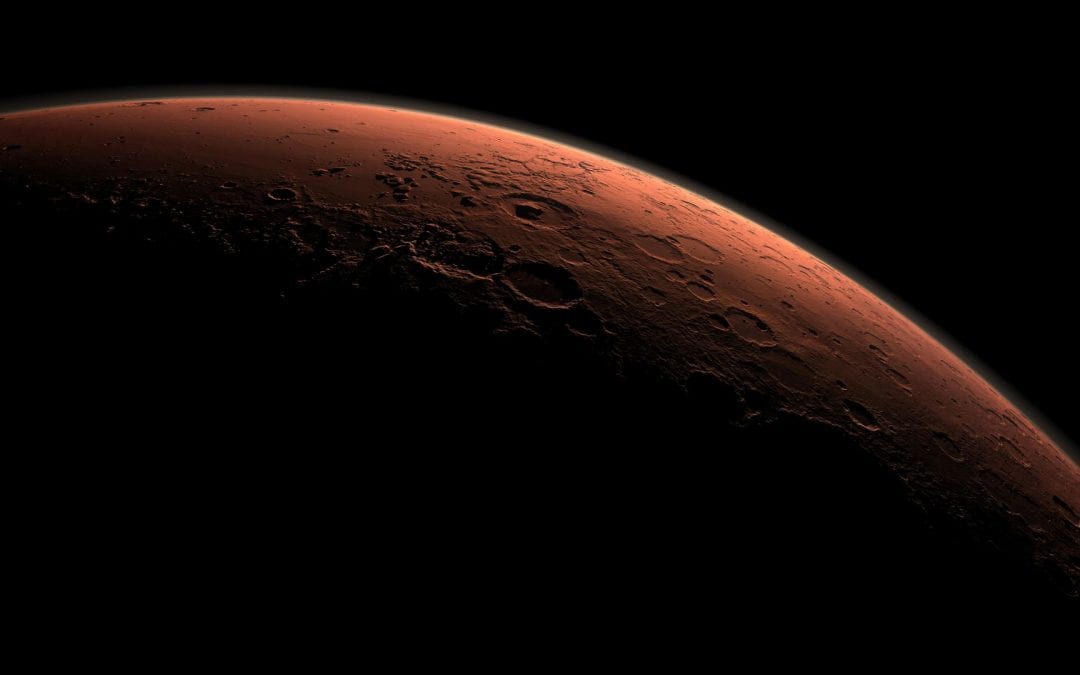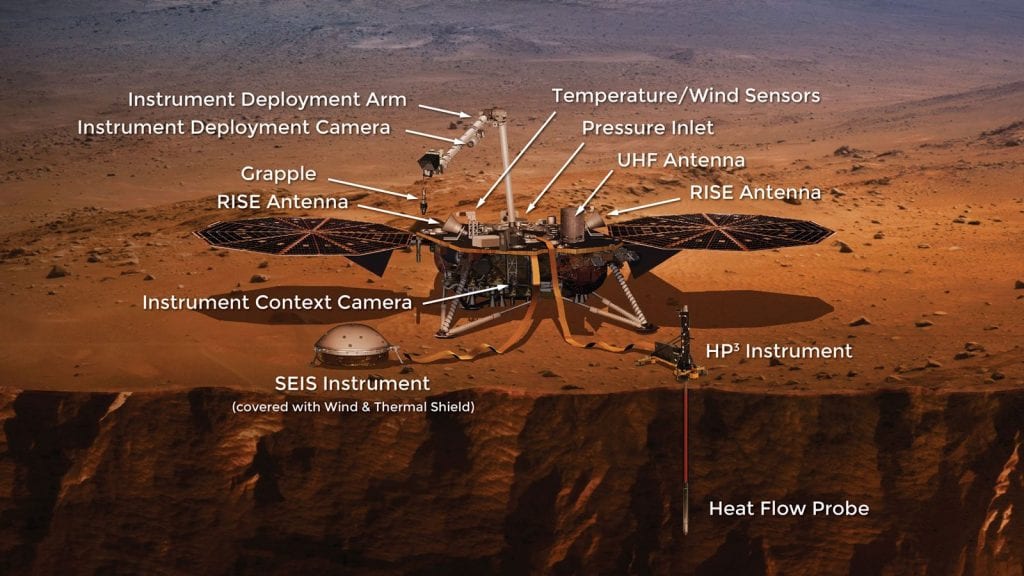By Chris Benton
On 26 November 2018, NASA’s lander InSight successfully touched down on Mars. But what is it doing there?
With much fanfare from the press, following a six-month 483 million km journey to reach our neighbouring planet, on 26 November 2018 NASA’s lander InSight successfully touched down on the vast, flat Martian plain of Elysian Planitia. Close to Mars’ equator, this location exposes Insight to Sun all year round for its solar panels to power the array of instruments designed to study the planet’s interior and atmosphere.
Figure 1: Artist impression of NASA’s lander Insight on the Martian surface with extended solar panels and labelled science instruments and antenna. Credit: NASA
Insight’s stationary position at Elysian Planitia and prime objective to study Mars’ interior structure and processes make this mission different from the rovers of recent years moving about analysing surface features such as rock formations and minerals. Over the next two to three months, Insight’s cameras will survey the nearby ground to find suitable level spots to place its two main instruments carefully onto the Martian soil.
These two instruments on the ground are the Seismic Experiment for Interior Structure (SEIS) and the Heat Flow and Physical Properties Package (HP3). Two others secured to the lander are the Rotation and Interior Structure Experiment (RISE) and Temperature and Winds for Insight (TWINS).
The dome-shaped SEIS instrument detects seismic vibrational waves from Mars’ interior mantle and crust caused by tectonic forces, essentially Marsquakes, and those triggered by meteorite impacts. To ensure accurate data, a suite of wind, pressure, temperature, and magnetic field sensors on TWINS can identify atmospheric conditions that may also result in surface vibrations. Information from seismic waves gives scientist information of densities and depths of the varying internal layers of the planet, just as earthquakes provides such information about Earth’s interior.
HP3, designed to burrow 5m into the ground in a self-hammering fashion, takes temperature recordings every 10 cm, thus developing a subsurface temperature profile. Scientists use this profile to determine the possible sources and subsequent flow of heat from Mars’ interior, which provides clues to processes by which rocky planets evolve under the influence of the enormous temperatures generated during their formation 4.5 billion years ago.
RISE provides precise measurements of the location of the lander in relation to Mars’s rotating north magnetic pole, determining how much the planet wobbles on its axis as it rotates, known as the precession. Comparing data from similar instruments on NASA’s Vikings and Pathfinder landers from the 1970s and 1990s respectively allows estimations of the rate at which Mars’ precession changes and hence its rotational inertia or torque, in turn placing constraints on the size and nature of the inner core. Computer models of the “sloshing” effect of a rotating core with varying degrees of liquidity determine if the inner region is now completely solid or to what degree it remains liquid.
Figure 2: Mars’ basic interior structure showing the hot inner core with temperatures dropping due to heat loss as one moves through the mantle to the thin outer crust. Insight’s SEIS will give information on Mars’ crustal thickness and mantle viscosity, while RISE will help determine its core size, possible liquid state, and composition. Credit: NASA
The knowledge on Mars’ interior structure and evolution provided by Insight will be invaluable not only in understanding the processes by which the rocky planets of our solar system formed and evolved, but also those of newly discovered exoplanets that have the potential to harbour life. Furthermore, if humans are going to inhabit Mars in the future, the more we know about this planet, the more effective we can be in developing the essential terraforming technologies that will be required.
Chris Benton is a semi-retired General Practitioner studying for a Masters in Astronomy at Swinburne University in Melbourne. He is also a member of the Auckland Astronomical Society.
Disclaimer: The ideas expressed in this article reflect the author’s views and not necessarily the views of The Big Q.
You might also like:
Water on Mars: Does this mean life existed?
What happened to life on Mars?



